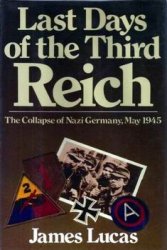Despite all the legislation designed to help the worker, the New Deal failed to accomplish what labor wanted most: the restoration of full employment. Not only did unemployment rise to unprecedented heights after 1930, but high unemployment persisted throughout the decade. Unemployment had risen sharply during the recession of 19201921, and earlier recessions, but then it had ebbed quickly. The persistence of high unemployment despite the best efforts of the Roosevelt administration to promote recovery was the most frustrating reality of the 1930s.
Could New Deal policies themselves have contributed to the persistence of high unemployment? One possibility is that New Deal relief policies had discouraged employment. But research by John Wallis (1987) showed that private employment was largely unaffected by the presence of relief programs, although later work by Robert Margo (1991) suggested that the availability of relief may have had some impact on the duration of unemployment.
Other economists have focused on “sticky” wages. As you can see in Table 24.3, real wages (wages divided by prices) remained at about the 1929 level throughout the 1930s despite the unprecedented level of unemployment. A simple model of supply suggests
|
TABLE 24 |
.4 UNION MEMBERSHIP, 1930-1955 |
_ | |||
|
NUMBER |
PERCENT OF |
NUMBER |
PERCENT OF | ||
|
YEAR (in thousands) |
LABOR FORCE |
YEAR |
(in thousands) |
LABOR FORCE | |
|
1930 |
3,401 |
6.8% |
1943 |
13,213 |
20.5% |
|
1931 |
3,310 |
6.5 |
1944 |
14,146 |
21.4 |
|
1932 |
3,050 |
6.0 |
1945 |
14,322 |
21.9 |
|
1933 |
2,689 |
5.2 |
1946 |
14,395 |
23.6 |
|
1934 |
3,088 |
5.9 |
1947 |
14,787 |
23.9 |
|
1935 |
3,584 |
6.7 |
1948 |
14,300 |
23.1 |
|
1936 |
3,989 |
7.4 |
1949 |
14,300 |
22.7 |
|
1937 |
7,001 |
12.9 |
1950 |
14,300 |
22.3 |
|
1938 |
8,034 |
14.6 |
1951 |
15,900 |
24.5 |
|
1939 |
8,763 |
15.8 |
1952 |
15,900 |
24.2 |
|
1940 |
8,717 |
15.5 |
1953 |
16,948 |
25.5 |
|
1941 |
10,201 |
17.7 |
1954 |
17,022 |
25.4 |
|
1942 |
10,380 |
17.2 |
1955 |
16,802 |
24.7 |
Source: Historical Statistics 1975, 178, Series D948-949.
That when unemployment is high, real wages will fall increasing the demand for labor and reducing supply of labor until unemployment (the difference between the supply and demand for labor) is eliminated. But for a number of reasons this adjustment mechanism did not work. Government policy is part of the explanation. In the first two years of the depression, as Anthony Patrick O’Brien (1989) has shown, the Hoover administration successfully pressured large corporations to maintain wages, a policy that the administration and business leaders thought would help maintain demand. During the early years of the New Deal, the NIRA continued the policy of maintaining wages. In addition, economic forces were at work keeping real wages high. Unemployed workers are not likely to suddenly slash their “reservation wage” (the minimum they would take) to the bone. Instead, they are likely to slowly adjust their reservation wage as they search the market for jobs (Economic Reasoning Proposition 1, scarcity forces us to make choices). The adjustment process therefore took considerable time (Lucas and Rapping 1972). During the latter part of the New Deal, the Wagner and Fair Labor Standard Acts and the associated growth of labor unions also helped maintain wages.
Would a policy of encouraging competition in labor markets have restored full employment? Even today, economists are far from a consensus on this contentious issue. Many economists continue to follow John Maynard Keynes, who argued, in his famous book The General Theory of Employment, Interest and Money (1936), that wage cuts would have simply fed a downward spiral of expectations, investment, national income, and employment. In Keynes’s view, only government spending on a massive scale could have cured the depression, and this simply did not happen before World War II. Recently, however, a number of economists, in particular Michael D. Bordo, Christopher J. Erceg, and Charles L. Evans (2000) and Harold L. Cole and Lee E. Ohanian (2004), have argued that New Deal policies that promoted high real wages inhibited adjustment in labor markets and prolonged high unemployment. Gauti Eggertsson (2008, 2012), however, has argued the contrary. He believes that New Deal policies worked on the whole to encourage expansion in the 1930s by creating expectations of higher prices.




 World History
World History









